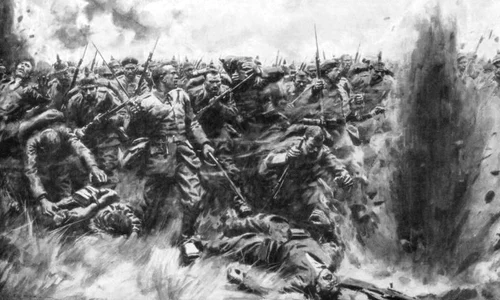
Aurel C Popovici and David Mitrany - Romanians Who Inspired the Founding Fathers of the EU
Europeans are more and more nervous. Since they felt obliged to recognise the necessity of intensifying the European integration as a solution to the present crisis as well as the post-crisis evolution, they resorted to the thesis of differentiation inside the EU. This was done in order to raise the convergence and without having a clear definition of the European identity as well as without expressing convincing strategic identity options.
Thus, at this stage, the “European spirit” increasingly lacks diversity as a basis for unity, yet it is based on differentiation and dissociation for a gradual and step-by-step integration. Increasingly, there is more “we and you” instead of “us” inside the EU as if there is not just one category of European citizens. Some Western political leaders and even functionaries in the European institutions think that Eastern Europeans have no connection whatsoever to the founding efforts of the present European construction. I was asked yesterday to answer whether Romanians had anything to do with the European creation and the integration process. Therefore, I proposed not one, but two names of Romanians who have contributed to the 20th-century European integration ideology:Aurel C Popovici and David Mitrany.
AUREL C. POPOVICI
He was one of the intellectuals and militant memorandum writers who understood the depth of the Double Monarchy crisis at the beginning of the 20thcentury. In 1906, Popovici proposed the project “The United States of Greater Austria” which encapsulated a federalist system that would respect a certain “national limit” where the federal power would not depend on the interests of the states, but on the peoples’ wishes. This “institutional change” of the empire would have meant the creation of a certain political community, a union which could be an influence for cooperation (instead of the “divide et impera” principle) not just inside the realm of the Monarchy, but for the neighbouring states and peoples as well.
Popovici thought that the model of the constitutional federalist reorganisation should have been adopted by the whole of Europe. Yet, Aurel C Popovici could not get the politicians of the time round to implementing his federalist project in Central/Danubian Europe. However, his ideas influenced other federalist aspirations which evolved post WW1 into an important pan-European movement. Recently, Matthew Omolesky wrote that Aurel C Popovici was a Central-European forerunner of the European re-organisation. Also, those who wrote about Richard von Coudenhove-Kalergi found that Popovici had a certain influence over the Austrian count’s ideas. In 1923, Kalergi published his manifesto work of “Pan-Europe” which made possible the Pan-European Congress of 1926 in which members of the European governments as well as political parties took part. Should we take into consideration that Briand’s Plan of European Federalist Union of 1929 appeared after Kalergi’s propositions, then it seems clear that Aurel C Popovici is among the avant-garde of the European federalists of the last century.
DAVID MITRANY
Mitrany wrote in his Memoirs of being “born and bred in Romania”, however, as the promoter of the principle of “shape follows function” in International Relations, he was more known in the Western World, rather than in Romania. During the interwar years, he argued with the Coudenhove-Kalergi count and focused on finding pragmatic ways to make possible the cooperation in the international system. Recently, the young researcher Mihai Alexandrescu from the Babeş-Bolyai University in Cluj – Napoca demonstrated that Jean Monnet based his project of European construction on the model of international organizations. Although he believed that the creation of the European Coal and Steel Community could be a possible expression of functionalism, Mitrany refused to interpret it in federalist terms (as neo functionalism does) since his solution to the regional integration was incomplete international cooperation. In spite of this, theoreticians of regional/European integration give credit to the strong influence of Mitrany’s functionalism.
FORERUNNERS AND HEIRS
Naturally, the list of Romanian contributors to the founding of European integration could be completed and I am sure that the readers will certainly do this. This is proof of the intensity and great interest of the local elite in the creation of a European architecture. Yet, the level of their engagement in the actual realisation of the new European construction is another subject altogether. Now, more than before or after the WW2, Europeanism is measured by the ability of the states and their citizens to implement European policies.
We could claim that the intellectual roots from Aurel C Popovici and David Mitrany, yet today’s and tomorrow’s citizens would be able to gauge its effect only in its socio-economic life of their countries and the European Union. So, I would like to talk to my friends from the old West:I hold a great respect for the “founding fathers” of the EU. However, I am worried about the precarious nature of the vision and determination of today’s leaders to continue and bring forward the European construction. As for the self-proclaimed nowadays’ Romanian elite, we can only hope that as soon as possible, it will prove to be a national and European elite.















